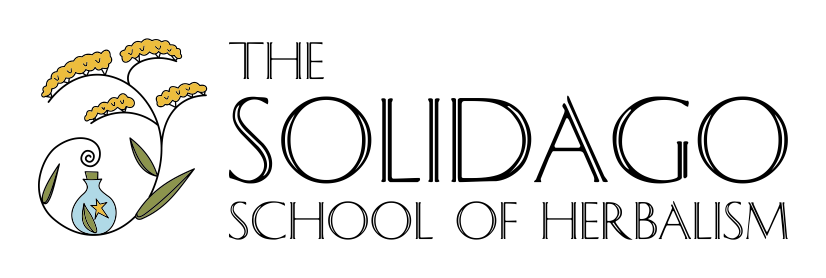Comfrey is a wonderful herb that is often misunderstood and, therefore, used with caution. It is an herb that can teach us how to be in "right relationship" with a plant.
Comfrey leaf is full of minerals, vitamins, mucilage, protein, allantoin, and other beneficial phytochemicals.
It improves the health of the hair, skin, and nails.
It helps maintain strength and flexibility in tendons, ligaments, muscles, and bones. It also has the ability to repair injured tissues.
It soothes and restores mucous membranes of the body including the digestive system, respiratory system, urinary system, and reproductive organs.
It is known to improve short term memory and to be anti-inflammatory.
I make a nourishing herbal infusion with dry comfrey leaf and drink one or two quarts a week, on average.
After I had an emergency appendectomy, I drank comfrey infusion everyday for two weeks, going through a whole pound of dry leaf.
I use topical applications of Comfrey leaf and root. They are nice infused in oil or water and then applied topically to injuries and shallow wounds.
When you buy Comfrey products or the bulk plant material, you will notice that it is required, by law, to come with a warning of "not for internal use."
This warning is due to a group of chemical compounds, called pyrrolizadine alkaloids (PAs) that Comfrey contains a few of. These chemicals are known to be detrimental to liver health. The PAs need to be consumed in large quantities over a long period of time to cause damage.
When Comfrey is consumed properly, the PAs do not seem to be a problem.
I consume Comfrey leaf that has been dried and then infused in water. Based on my research and experience, I believe that this is the safest and only way to consume Comfrey.
Pyrrolizadine alkaloids are found in minute amounts in the leaves and in more concentrated amounts in the roots. The PAs tend to degrade once the plant material is dried and also are not very water soluble. Therefore, I feel safe and comfortable, consuming the dry leaf in a water based infusion, a couple times a week. I would definitely not use a fresh root alcohol tincture, in large amounts, over a long period of time.
I avoid the root tincture completely. I also avoid any Comfrey products that have been concentrated or turned into pills or capsules. There are other plants, like the Senecio spp, that have more problematic PA chemicals and amounts. This genus of plants should be completely avoided.
Being in "right relationship" with a plant means you understand the plant you are working and connecting with. It means you know the proper way to safely prepare and consume the plant. It also means that you know your body and perceive how you relate to the plant and how you feel when you work with it.
Comfrey Nourishing Herbal Infusion
Ingredients:
1 oz by weight of dried Comfrey leaf, cut and sifted
1 quart of boiled water
1 quart ball canning jar with a tight lid
straining set-up:
I prefer to use a ceramic coffee drip filter, a potato sac towel square, and an empty quart jar
Directions:
Boil water.
Weigh out 1 ounce of comfrey leaf and put into the canning jar.
Fill the jar with boiling water, stirring in the comfrey and topping it off.
Cover with a tight lid.
Let it sit on the counter for 4-10 hours, overnight works well.
Put the unstrained comfrey infusion in the fridge for an additional hour or more, after it has cooled to room temp, to release more of the healing mucilaginous constituents.
Strain by placing the cloth in the filter, place the filter on an empty jar, and pour the infusion through the cloth and filter into the empty jar.
Empty all of the comfrey into the cloth and squeeze out any excess infusion still in the herb.
Store the infusion in the fridge. Drink within 48 hours. It will go bad relatively quickly, due to it’s protein content.
Drink 1-2 quarts a week over ice.
Comfrey infusion can be flavored with a pinch of mint, coco, cream, cinnamon, apple cider, or enjoyed plain.
If you want to dig deep into Comfrey and learn how to make nourishing herbal infusions, check out my online course, Nourish Yourself.
With Nourish Yourself, you will learn how to work with common herbs in simple ways to build and support health.

